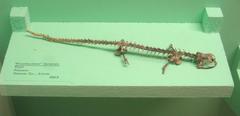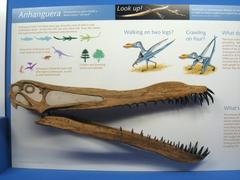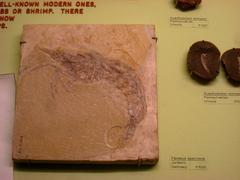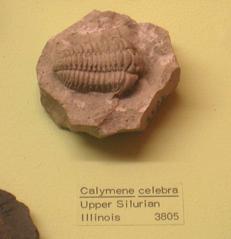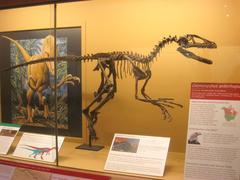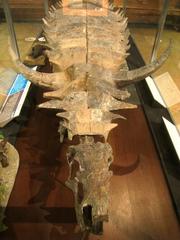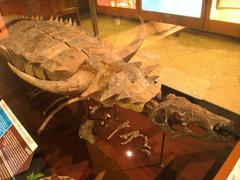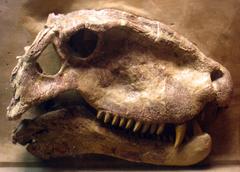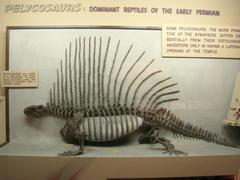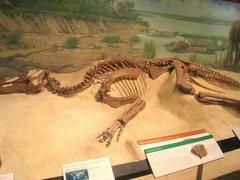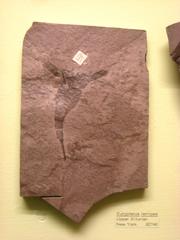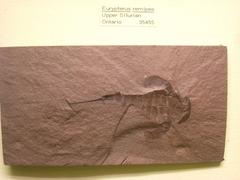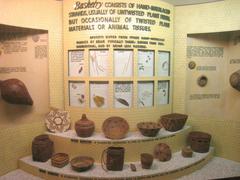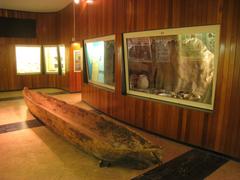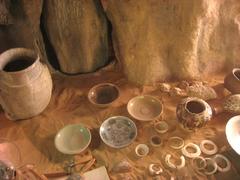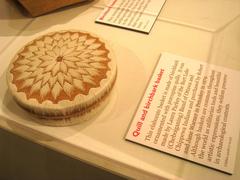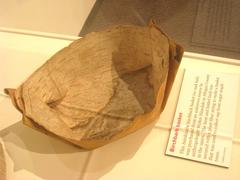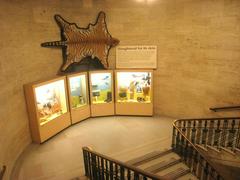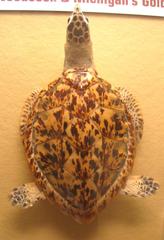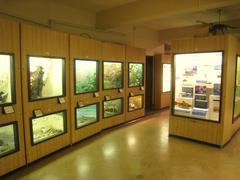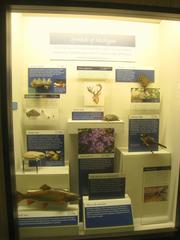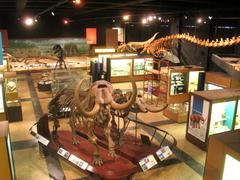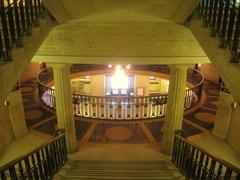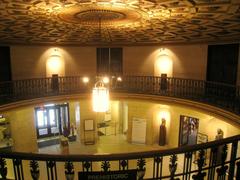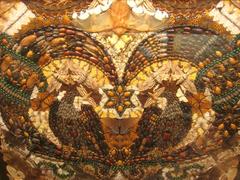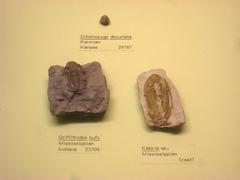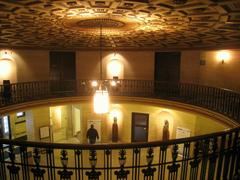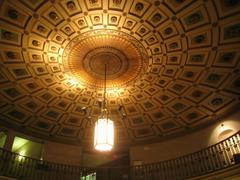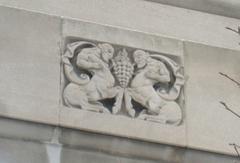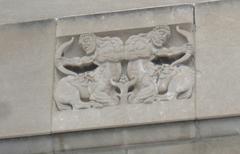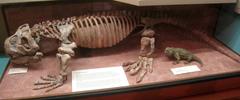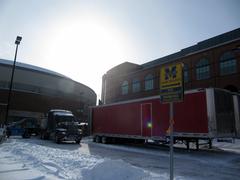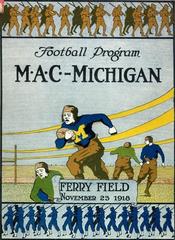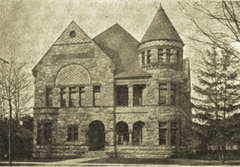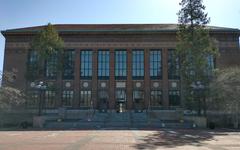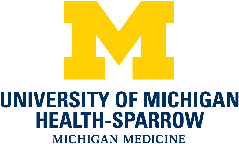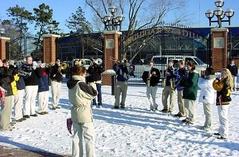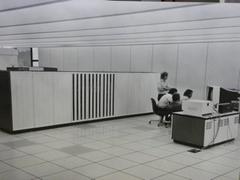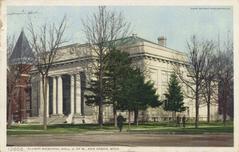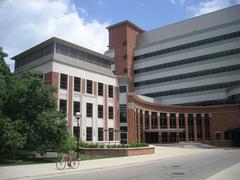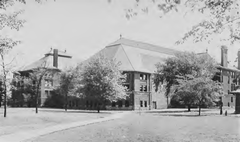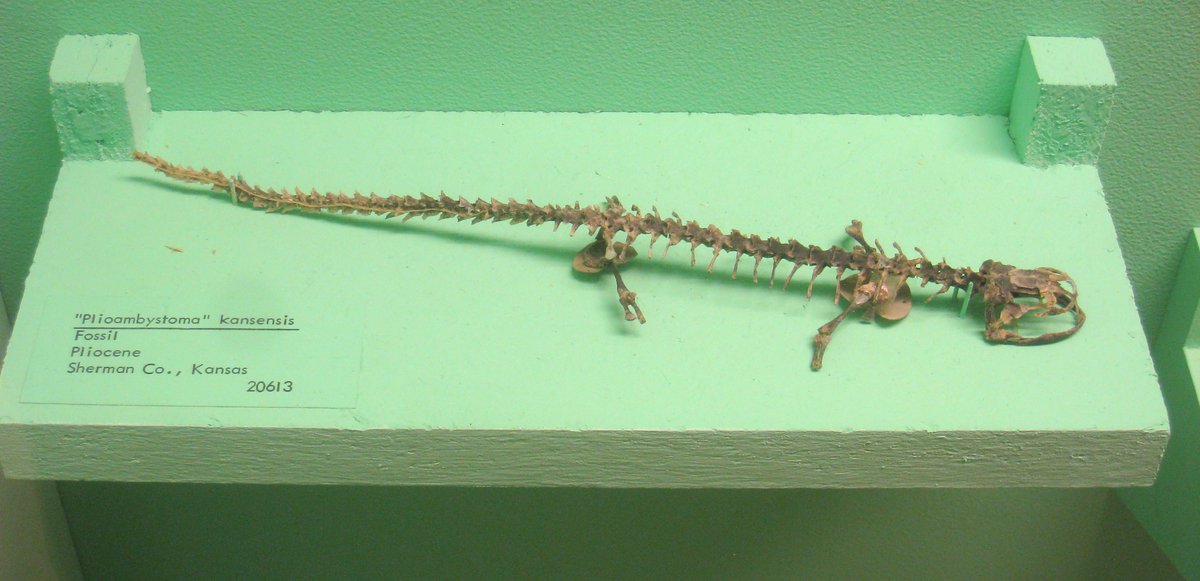
University Of Michigan Museum Of Natural History
University of Michigan Museum of Natural History: Visiting Hours, Tickets, and Guide to Ann Arbor’s Premier Historical Site
Date: 15/06/2025
Introduction
Located in the heart of Ann Arbor, the University of Michigan Museum of Natural History (UMMNH) is a leading destination for anyone intrigued by the story of life on Earth, scientific discovery, and the wonders of the natural world. Since its founding in 1837, the museum has grown from a modest collection of teaching specimens into a dynamic, interactive institution that welcomes visitors of all ages. Housed in the innovative Biological Sciences Building since 2019, UMMNH offers more than 45,000 square feet of exhibit space, including Michigan’s largest dinosaur displays, a cutting-edge planetarium, and visible labs where science comes alive.
With free general admission, accessible facilities, and a vibrant mix of permanent and rotating exhibits, UMMNH invites families, students, and tourists to explore topics ranging from paleontology and anthropology to local ecosystems and cutting-edge research. This comprehensive guide will help you plan your visit, discover must-see highlights, and make the most of your time at this cultural and educational gem.
Table of Contents
- Welcome to the University of Michigan Museum of Natural History
- Visiting Hours, Tickets, and Accessibility
- Getting There and Nearby Attractions
- Historical Overview
- Notable Exhibits and Educational Initiatives
- Governance, Funding, and Community Support
- Plan Your Visit: Tips and Recommendations
- Frequently Asked Questions (FAQ)
- Conclusion: Discover, Learn, and Explore at UMMNH
- References
Welcome to the University of Michigan Museum of Natural History
UMMNH stands as a beacon of education and discovery in Ann Arbor. Visitors can expect a blend of rich history, hands-on exhibits, and engaging educational programs. Whether you are a resident, a university student, or a tourist, the museum’s diverse collections and interactive experiences are designed to spark curiosity and enhance learning for all.
Visiting Hours, Tickets, and Accessibility
- Hours: Tuesday–Sunday, 10:00 AM–5:00 PM. Closed on Mondays and major holidays.
- Admission: Free for all visitors. Donations are welcome to support the museum’s mission.
- Planetarium Shows: Require a separate ticket, which can be reserved online or purchased at the museum front desk. Advance reservations are recommended for weekends and school holidays.
- Accessibility: The museum is fully accessible, offering ramps, elevators, and accessible restrooms. Wheelchair users and visitors with mobility challenges will find the building easy to navigate.
Getting There and Nearby Attractions
- Location: Biological Sciences Building, 1105 North University Avenue, Ann Arbor, MI 48109-1085.
- Parking: Public parking structures are available nearby, including the Palmer Parking Structure. University Blue lots are free evenings, weekends, and all day on Sundays. Street parking is available on adjacent roads.
- Public Transit: The UM Central Campus Transit Center is a short walk away and is served by multiple bus routes.
- Nearby Attractions: Enhance your visit by exploring the University of Michigan Museum of Art, Nichols Arboretum, Matthaei Botanical Gardens, and downtown Ann Arbor’s restaurants and shops.
Historical Overview
Early Origins and Founding Collections
UMMNH traces its roots to 1837, when the University of Michigan began assembling natural history collections for teaching and research. The collections expanded rapidly, especially after Joseph Beal Steere’s donation of over 60,000 specimens in the 1870s. By 1881, a formal museum had been established for public display.
Expansion and the University Museums Building
In response to public interest and growing collections, the University Museums Building—designed by Albert Kahn—opened in 1928. It was home to multiple university museums and featured distinctive terrazzo puma sculptures by Carleton W. Angell.
Institutional Evolution and Public Engagement
The museum focused increasingly on public education after 1956, adding a planetarium in 1959 and expanding in 1964. UMMNH became a popular destination for school groups, families, and the community.
Transition to the Biological Sciences Building
To modernize facilities and expand research, the museum relocated in 2019 to the new Biological Sciences Building. The move enabled state-of-the-art exhibits, visible research labs, and more immersive learning experiences.
Notable Exhibits and Educational Initiatives
- Evolution: Life Through Time: Explore four billion years of Earth’s history with fossils, dioramas, and interactive stations.
- Hall of Evolution and Prehistoric Giants: Marvel at a towering Tyrannosaurus rex, rare male and female mastodon skeletons, and other prehistoric creatures.
- Exploring Michigan: Discover the state’s ecosystems and geological history.
- Tree of Life: An engaging multimedia exhibit tracing the genetic links among all living species.
- Planetarium and Dome Theater: Experience immersive astronomy shows exploring the cosmos.
- Science at Work: Observe actual research in the Fossil Prep Lab and Biodiversity Lab.
- Changing Exhibits: Rotating displays such as “Visions of the PostNatural” and “Unseen Worlds” bridge art and science.
- Educational Programs: Science demonstrations, lectures, summer camps, and field trips engage thousands of students and families annually.
Governance, Funding, and Community Support
UMMNH is part of the University of Michigan’s College of Literature, Science, and the Arts. While university funding is substantial, nearly half of the museum’s operating revenue comes from memberships, donations, and sponsorships. Free admission underscores a commitment to accessibility and public engagement.
Plan Your Visit: Tips and Recommendations
- Best Times: Weekdays are less crowded. Arrive early for a quieter experience.
- Planetarium Shows: Reserve tickets in advance, especially on weekends.
- Family-Friendly: The museum is ideal for children, with interactive exhibits and hands-on activities.
- Photography: Welcome for personal use (no flash or tripods).
- Food and Drink: On-site café available; outside food is allowed in designated areas.
- Parking: Plan parking in advance, or consider public transit for convenience.
- Accessibility: Stroller rentals and quiet areas are available.
Frequently Asked Questions (FAQ)
Q: What are the museum’s hours?
A: Tuesday–Sunday, 10:00 AM–5:00 PM. Closed Mondays and major holidays.
Q: Is admission free?
A: Yes. Only special shows/events require tickets.
Q: How do I get planetarium tickets?
A: Reserve online or purchase at the museum. Advance booking is advised.
Q: Is the museum accessible?
A: Fully accessible with ramps, elevators, and accessible restrooms.
Q: Are guided tours available?
A: Yes, including for groups by appointment. Check the website for details.
Q: Can I bring my children?
A: The museum is very family-friendly, with many interactive exhibits.
Q: Are pets allowed?
A: Only service animals are permitted.
Conclusion: Discover, Learn, and Explore at UMMNH
The University of Michigan Museum of Natural History offers a unique blend of scientific discovery, education, and community engagement. With world-class exhibits, family-friendly programs, and a strong commitment to accessibility, it stands as one of Ann Arbor’s most significant cultural assets. Plan your visit to immerse yourself in the wonders of natural history and support an institution dedicated to lifelong learning and public service.
To stay informed about new exhibits and events, follow UMMNH on social media and consider downloading the Audiala app for audio tours and enhanced visitor experiences.
References
- University of Michigan Museum of Natural History Visiting Hours, Tickets, and Exhibits Guide, 2023, University of Michigan (https://lsa.umich.edu/ummnh)
- University of Michigan Museum of Natural History Visitor Guide: Hours, Tickets, Exhibits & Nearby Attractions, 2023, MuseumsUSA (https://www.museumsusa.org/museums/info/23533)
- University of Michigan Museum of Natural History Visiting Hours, Tickets, and Visitor Guide, 2023, University of Michigan (https://lsa.umich.edu/ummnh/visitors/)
- University of Michigan Museum of Natural History: Visiting Hours, Tickets, and Must-See Exhibits, 2023, University of Michigan (https://lsa.umich.edu/ummnh/visitors/exhibits.html)


